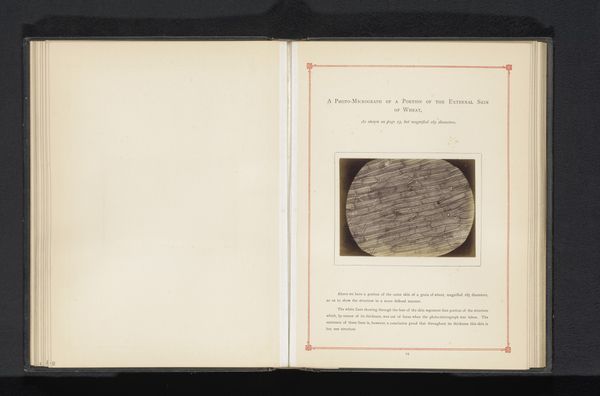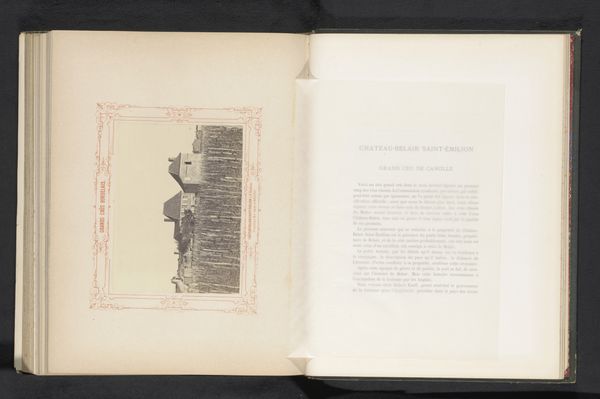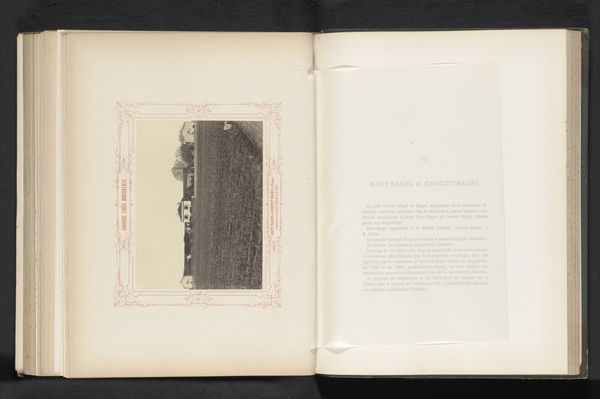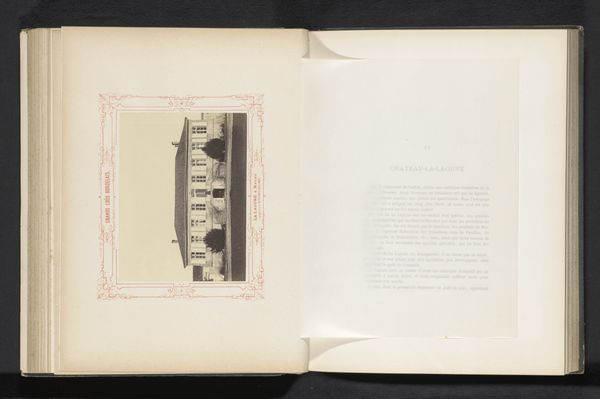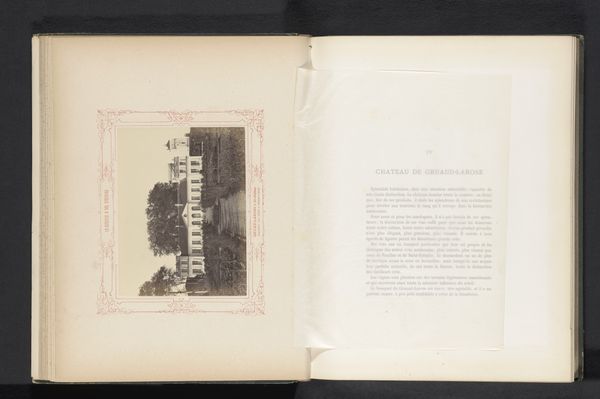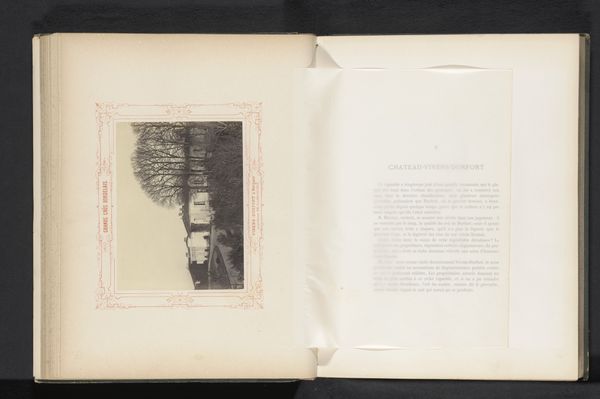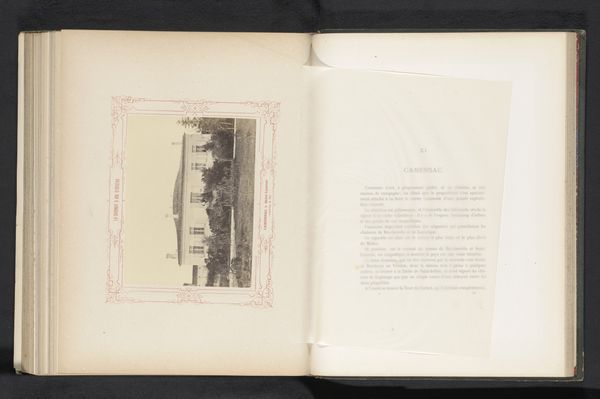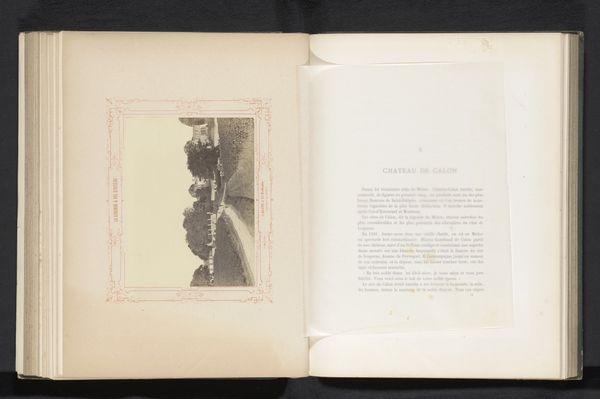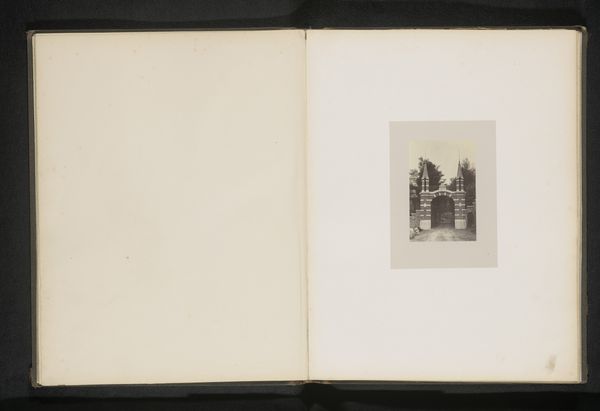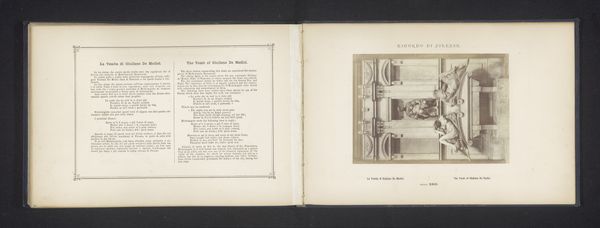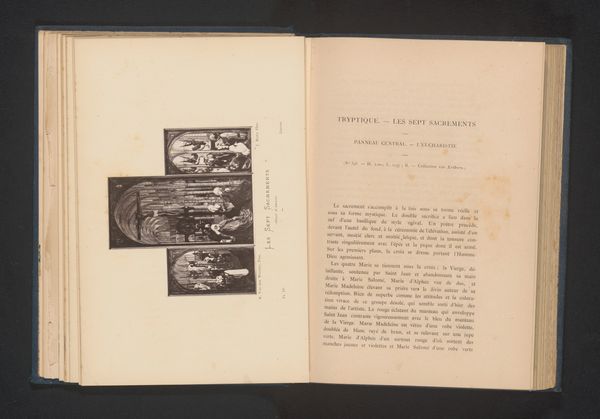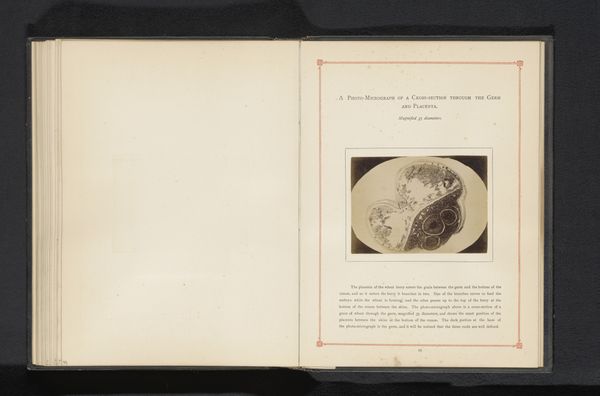
print, photography
#
aged paper
#
still-life-photography
#
homemade paper
#
paper non-digital material
#
paperlike
# print
#
personal journal design
#
paper texture
#
photography
#
plant
#
folded paper
#
letter paper
#
paper medium
#
naturalism
#
design on paper
Dimensions: height 74 mm, width 102 mm
Copyright: Rijks Museum: Open Domain
Editor: We're looking at "Microscoopopname van een tarwekorrel," a photograph, before 1892, by Robert W. Dunham. The image is of what seems to be a scientific observation presented within a beautifully bound volume. It has this quality, a blending of art and science that’s quite appealing. What historical factors influenced the presentation of scientific imagery in this format? Curator: That's an interesting reaction. We often forget the social context in which early scientific photography developed. It wasn't always detached and clinical. Consider that before widespread printing technologies, knowledge was disseminated through exclusive networks, often tied to elite institutions or private societies. The presentation in a bound volume suggests the dissemination to a privileged audience, who would have valued not just the scientific content, but also the aesthetic experience of viewing it in such a format. Who would be commissioning or purchasing this work, and why would they value it presented in this way? Editor: So it’s less about mass distribution and more about cultivating a niche interest among educated elites? Did this affect the kind of science being pursued, perhaps directing focus towards areas that resonated with those patrons? Curator: Precisely! Funding for scientific endeavors historically depended on patronage, and visual representations played a crucial role. An image like this one might appeal to landowners interested in agricultural yields or industrialists exploring new applications of microscopy. Do you see the connections between power structures and seemingly neutral scientific observation? Editor: Definitely! The photograph then is also a reflection of power dynamics operating during that period, even in its "objective" representation of a grain of wheat. Curator: Exactly! The aesthetic and material qualities are just as telling as the image itself. Considering such aspects offers us insight into how knowledge was constructed, circulated, and consumed within specific socio-economic strata. It prompts us to question the neutrality of scientific imagery and its relationship to power structures. Editor: That's fascinating; I will consider that. I came in seeing only science meeting art, but I now see it reflecting a very particular slice of society. Thanks for the insight.
Comments
No comments
Be the first to comment and join the conversation on the ultimate creative platform.
